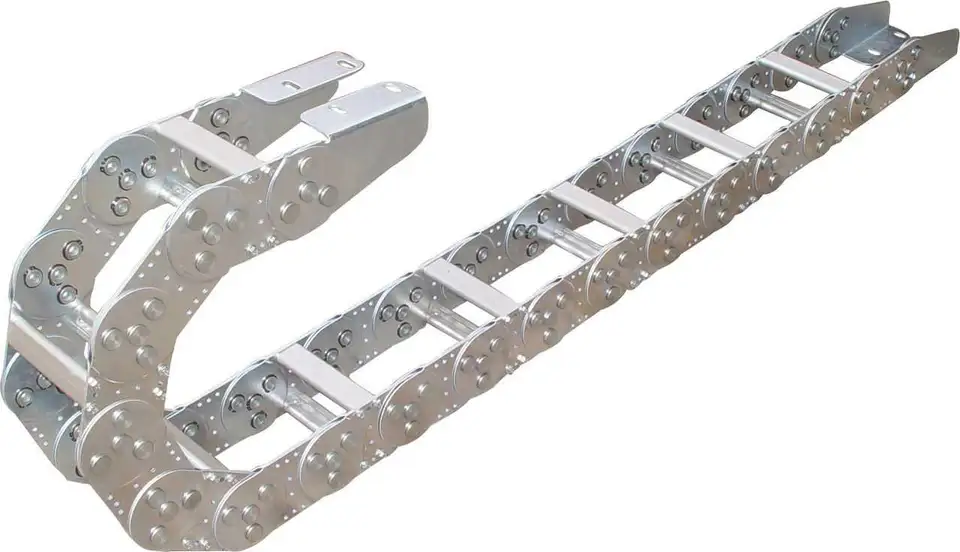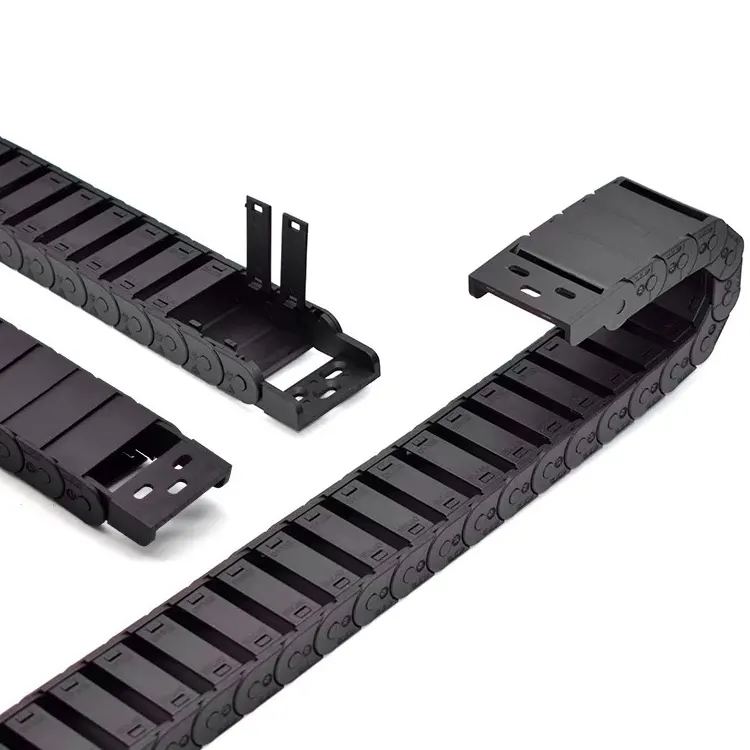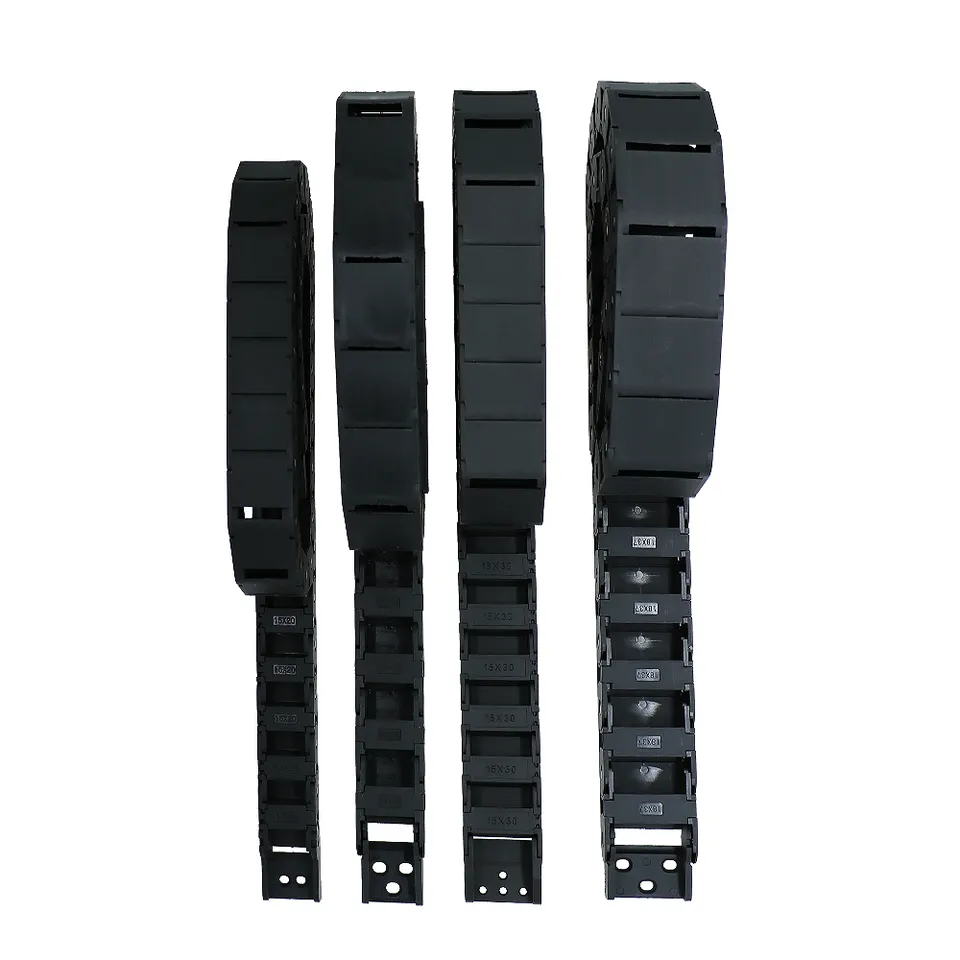Product Description
Hot Selling Cement Clinker Drag Chain Covneyor
Drag chain conveyor is a new product for horizontal (or tilt ≤ 15 °), for conveying of powder, granular, small pieces of material, in the technically advanced level in the country. This product has a reasonable design, novel structure and long service life, making it significantly superior to screw conveyors, buried scraper conveyors and other conveying equipment. It is an ideal new type of conveying equipment.
Fu-type chain conveyors are supplied with 2 kinds of ordinary rubber and plastic belts. Applicable working environment -15 °C -40 °C. When transportingcomponents with acidic and alkaline substances, oil substances and organic solvents, alkali-resistant and acid-proof conveyor belts are used.
Features:
Chain conveyor (FU type)
(1) Reasonable structure, novel design, advanced technology and complete series.
(2) Fully-enclosed casing, good sealing performance, safe operation, and reliable operation.
(3) The chain conveyor chain is made of alloy steel processed by advanced heat treatment methods with long service life and extremely low maintenance rate.
(4) Large conveying capacity, conveying capacity up to 11m3/h.
(5) The transmission energy consumption is low. With the help of the internal friction of the material, the material is driven to pull, saving electricity and durability.
(6) Import and export are flexible. Elevated, ground, pit, level, and climbing (≤ 15°) can be installed. The length of the conveyor can be designed according to the user.
Composition:
The chain conveyor is mainly composed of the first section, the middle section, the optional section, the tail section and the conveyor chain, the import and export materials, and the drive. The drive is divided into 2 types: left and right, and the drive type is selected according to the delivery volume and the delivery length. The feed inlet is divided into 3 types: the upper feed inlet, the lateral feed inlet, the 2 feed inlets, the discharge outlet is the head outlet, and the intermediate outlet and the middle outlet are also available for users to use.
| Model | MS20 | MS25 | MS32 | MS40 | |
| Material density (t/m3) | 0.4-0.8 | 0.4-0.8 | 0.4-0.8 | 0.4-0.8 | |
| capacity (m3/h) | 50 | 60 | 80 | 120 | |
| maximum conveying length (m) | 40 | 40 | 40 | 60 | |
| safety dip angle | 0-15° | 0-15° | 0-15° | 0-15° | |
| scraper chain | flight pitch (mm) | 200 | 200 | 200 | 200 |
| chain pith(mm) | 100 | 100 | 100 | 100 | |
| roller diameter (mm) | 28 | 28 | 28 | 28 | |
| chain type | TG100 | TG100 | TG100 | TG100 | |
| weight per meter (kg) | 7.8 | 12.2 | 35 | 43.2 | |
| Structure: | Chain Conveyor |
|---|---|
| Material: | Stainless Steel |
| Material Feature: | Oil Resistant, Heat Resistant, Fire Resistant |
| Application: | Chemical Industry, Grain Transport, Mining Transport, Power Plant, Cement |
| Condition: | New |
| Conveying Length: | Max40m |
| Customization: |
Available
| Customized Request |
|---|

Can drag chains be used in the automotive and transportation sectors?
Yes, drag chains can be used in the automotive and transportation sectors for various applications that involve cable management and protection. In these industries, drag chains play a crucial role in ensuring the reliable and safe operation of cables, wires, and hoses used in vehicles and transportation systems.
In the automotive sector, drag chains are commonly used in modern vehicles, including cars, trucks, buses, and specialty vehicles. They are employed to organize and protect cables and hoses that control various systems such as engine components, sensors, lighting, and braking systems. Drag chains help prevent cables from getting tangled, pinched, or damaged during the vehicle’s movement, ensuring consistent and smooth operation of the electrical and mechanical systems.
In the transportation sector, drag chains are used in a wide range of applications, including trains, trams, subways, and other mass transit systems. They are used to manage and protect cables and hoses that control vital functions such as propulsion systems, doors, HVAC systems, communication systems, and more. Drag chains in these applications must be durable, reliable, and able to withstand the continuous movement and harsh environmental conditions experienced in transportation settings.
Drag chains used in the automotive and transportation sectors are designed to withstand various challenges, including high vibration, temperature fluctuations, exposure to dust and dirt, and continuous flexing during vehicle operation. They are typically made from materials such as plastic, metal, or hybrid materials to offer the necessary strength and flexibility required for the specific application.
Overall, drag chains are essential components in the automotive and transportation sectors, ensuring proper cable management, protecting cables from wear and damage, and contributing to the overall safety, efficiency, and reliability of vehicles and transportation systems.

Can drag chains be used in wastewater treatment or sewage systems?
Yes, drag chains can be used in wastewater treatment and sewage systems to manage and protect cables and hoses. These systems often involve complex machinery and equipment that require proper cable management to ensure smooth and efficient operation. Drag chains offer several benefits that make them suitable for such applications:
- Cable Protection: In wastewater treatment and sewage systems, various cables and hoses are used to control pumps, valves, and sensors. Drag chains enclose and protect these cables from exposure to water, chemicals, and debris, preventing damage and prolonging their lifespan.
- Durability: Drag chains are typically made from durable materials like steel or reinforced plastics, making them resistant to wear, corrosion, and the harsh environment often present in wastewater treatment facilities.
- Smooth Movement: The smooth and controlled movement of drag chains ensures that cables and hoses are guided without tangling or snagging, even in applications with continuous motion or high-speed operations.
- Cable Organization: Drag chains help organize cables and hoses neatly, reducing the risk of entanglement and simplifying maintenance and repair tasks.
- Contamination Prevention: Drag chains provide a barrier that helps prevent contaminants from entering cable and hose channels, minimizing the risk of clogs or malfunctions.
- Reduced Downtime: By protecting cables and hoses, drag chains help reduce downtime caused by cable failures or damage, leading to increased overall system reliability and efficiency.
- Adaptability: Drag chains are available in various sizes and designs, allowing them to be customized to fit specific wastewater treatment or sewage system requirements.
- Resistance to Chemicals: Many drag chain materials are resistant to chemicals commonly found in wastewater and sewage systems, ensuring long-lasting performance even in corrosive environments.
In conclusion, drag chains are a valuable cable management solution for wastewater treatment and sewage systems, providing protection, organization, and durability in challenging industrial settings.

What are the noise and vibration characteristics of drag chains?
The noise and vibration characteristics of drag chains vary depending on several factors, such as the design, material, installation, and the specific application they are used in.
Noise Characteristics:
Drag chains can generate some noise during operation, especially when the cables or hoses inside the chain are moving or rubbing against the chain’s interior surfaces. However, many drag chains are designed with noise-reducing features to dampen or minimize this noise. These features can include special interior designs, noise-absorbing materials, and smooth gliding surfaces to reduce friction.
Additionally, the way the drag chain is installed and maintained can also impact the noise levels. Proper installation, with adequate support and alignment, can help reduce any rattling or vibration that may contribute to noise.
Vibration Characteristics:
Drag chains are generally designed to provide smooth and steady movement for the cables or hoses they protect. They are engineered to handle dynamic loads and motion, which means they can absorb some of the vibrations generated during machine operation.
However, the level of vibration experienced with drag chains can also be influenced by factors like the speed of movement, the weight and flexibility of the cables/hoses, and the overall construction of the machine or equipment. Vibration isolation mounts or other damping techniques can be used in conjunction with drag chains to further minimize vibrations.
In summary, the noise and vibration characteristics of drag chains can vary, but many modern drag chains are designed to minimize noise and provide smooth cable movement. Proper installation, maintenance, and the use of noise-reducing features can contribute to a quieter and more stable operation of drag chains in industrial applications.


editor by CX 2023-08-31